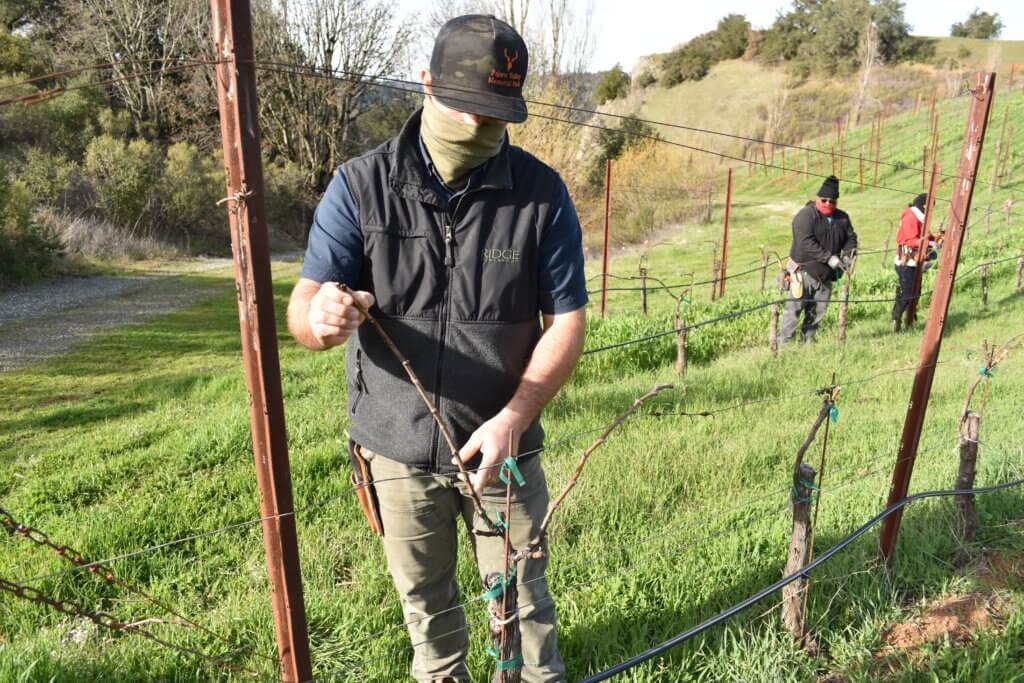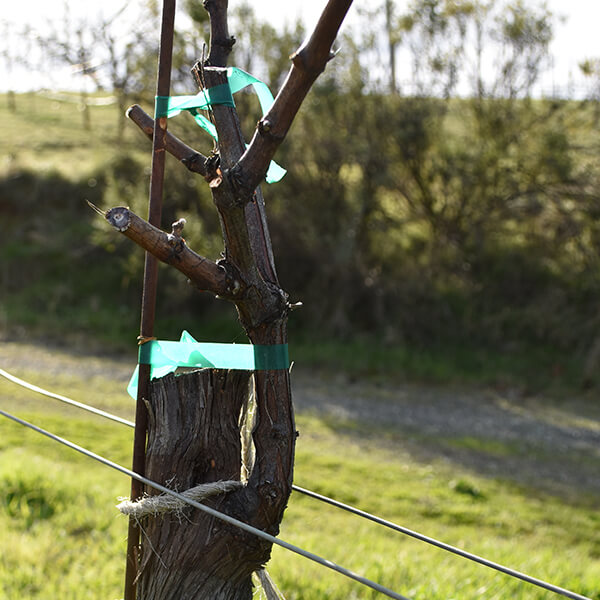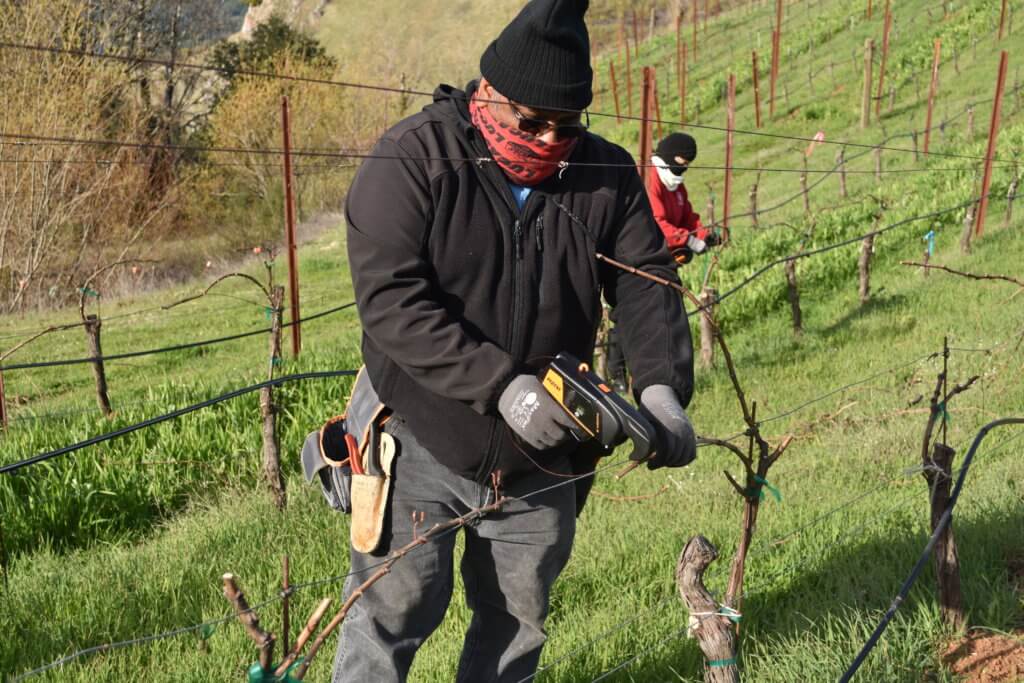What is Cane Pruning and Why Do We Do It?
Blog Post
Beginning in December at Lytton Springs and January at Monte Bello, pruning operations kick off the start of the next vineyard season. A common pruning method, cane pruning, is regularly used in our vineyards because it enables our vines to produce consistent yields over the years. Director of Vineyard Operations at Monte Bello, Kyle Theriot, goes into detail on this process and its benefits in the sections below.
What is Cane Pruning?
Cane pruning is a method of pruning that involves the cutting the vine down to one or more canes that will later produce new shoots. After cane-pruning, the vine is left with a trunk and its remaining canes (usually one for the current year’s growth and one renewal spur).
How Do We Cane Prune Our Vineyards?
Monte Bello is predominantly cane pruned, where our vineyard team leaves a single cane of one-year-old wood and a renewal spur with two buds.
“We tie-down the first cane onto the underwire and that’ll provide this year’s growth, and the renewal spur provides the next year’s cane to lay down,” said Theriot.
This process takes place as soon as erosion control is completed on the mountain: usually the first Monday in January. This typically allows the team enough time (around two and a half months) to finish pruning season before bud break begins.
The cane pruning process happens in tandem with the tying operations. All pruned vines will have two canes left sticking up that then need to be laid down and tied. The tying crew will start usually about a month after the pruning team starts. This provides a buffer so the teams don’t run into the each other, as tying typically goes much faster than pruning.
“Once the pruning and tying are done we’re pretty much ready for the beginning of the season and for bud break,” said Theriot.
Why is Cane Pruning Important for Vineyard Management?
As Theriot said, “It all starts with pruning.” He explained the importance of pruning and pre-season vineyard management as follows:
“You’re either setting yourself up for success or failure with pruning. Especially with this type of system, you’re clipping each shoot down to two buds so it’s kind of pre-determined in what it’s going to yield unless you do some major surgery. We’re counting these buds on every single vine, every single cane, in a way that reflects our growing season. That’s the first determining factor. Now, we’re not guaranteed that everything is going to bud and have a viable crop, but our first move is to ask how much rainfall do we have, what was growing season like last year, and how many buds on the vine do we have right now.” – Kyle Theriot
Planning for Vineyard Success: Considerations for Cane Pruning
Cane pruning operations can change depending on multiple outside factors. For example, weather, rain, vine age, and previous seasonal growth all should be considered when deciding how much of the vines should be pruned.
“We’ll think about how the season went in the previous year, what kind of rainfall we had, and ask ourselves, ‘are we in a drought situation?’ because that will determine how much length we’re leaving on each one of those canes that we’re tying down on the wire. If we [have enough] water, we might leave a few more buds on that cane to allow for more growth. It’s all about trying to balance that vine and the fruit load on that vine and it starts with the pruning. The more we leave the more resources it’s going to take to balance out that vine, so if we leave a bunch of buds on those canes and we’re short on rainfall then there’s not going to be enough resources and it won’t grow properly.” – Kyle Theriot
So, for years where less water is expected, the team cuts the vine’s buds back more to allow the vines to have the best chance to grow.
Timing the pruning operations correctly is also key for vineyard sucess. For example, our Lytton Springs and Monte Bello vineyards begin their pruning operations in December and January, respectively, due to different expected seasons for bud break.
“It all depends on your climate, what area you’re in, and how much you have to get done in December to be able to get through everything before bud break,” said Theriot.
The Ravaz Index: Pruning & Preparing for Crop Load
The Ravaz Index, a measurement of crop load or the balance of fruit mass and canopy of vines, is a calculation of the yield of the previous harvest compared to the dormant pruning weight of the following winter.
The full calculation for the Ravaz Index is:
(Crop load = Vine yield / dormant pruning weight)
Our vineyard teams also take this index into account when planning around pruning and for the upcoming harvest. Theriot calls the Ravaz Index “the first indicator of how your vineyard is looking,” and that the resulting calculated ratios showcase “the ebbs and flow of the vineyard.”
Resources Related to Cane Pruning
If you enjoyed this resource on cane pruning and you’re interested in more related content, consider the following resources:
Wait!
In order to qualify for user related discounts, you must log in before proceeding with checkout. Click the button below to log in and receive these benefits, or close the window to continue.
Log In

